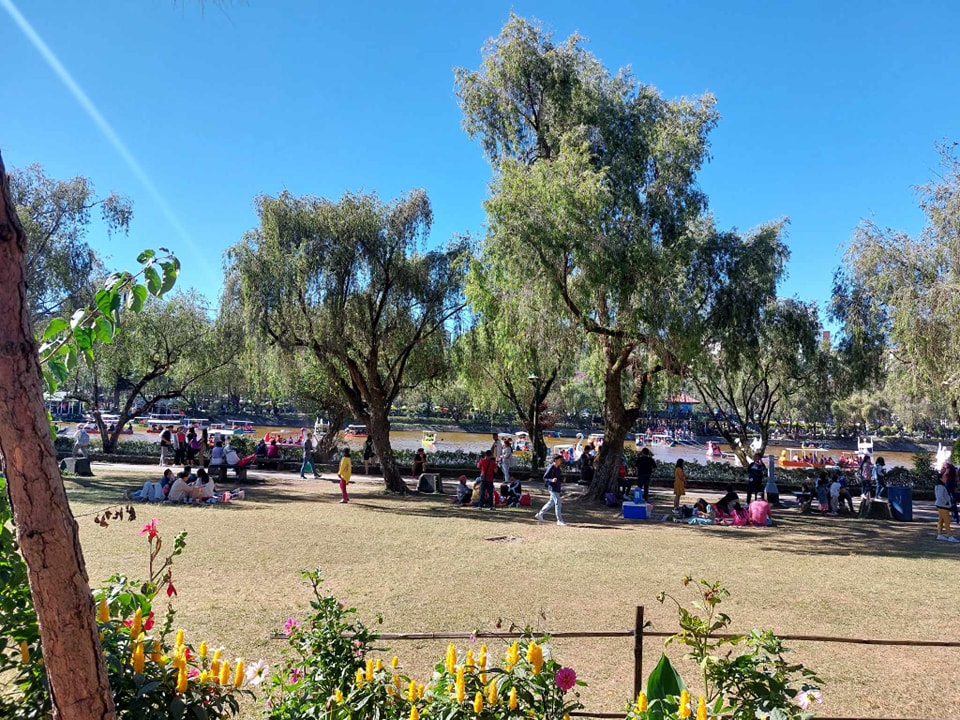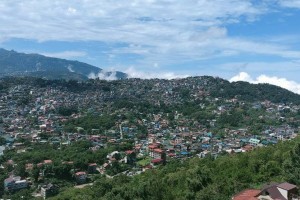
BAGUIO CITY (PIA) -- Where do we see Baguio City in the future?
A study of the National Economic and Development Authority in 2019 showed that the city is moving towards urban decay.
Urban decay is a sociological process where a previously functioning city collapses toward disrepair and decrepitude through irresponsible urbanization and industrialization, and is a result of breaching the city’s carrying capacity.
Failing to address these issues will eventually cause the city to fall into irreversible urban decay.
To reverse and avert the deterioration of the city, the local government has been working on intervention and revitalization efforts. Improving infrastructure, promoting sustainable tourism, and preserving its unique cultural heritage are crucial in shaping the city's future.
Setting the tone and the goal of each and every person in the city towards the future, a new Baguio vision was crafted. The "Baguio 2043: A creative, inclusive, and livable city" vision aims to transform the city into a sustainable and thriving urban center in the future.
According to Architect Donna Tabangin, chief of the city planning, development and sustainability office, the new vision specifically indicates the year 2043, which was computed in the urban carrying capacity study in 2019. It conveys that the vision is about overcoming the projected onset of irreversible urban decay by 2043.
"It states there that if we go for business as usual, and just allow all things that are happening right now without implementing changes, 2043 will be the ending year of the city, irreversible urban decay," Tabangin said.
She explained that urban decay means the city is no longer livable; there is no water, no fresh air, has least forest area, and people do not see Baguio as a home anymore.
In setting the goal, the local government developed some indicators to measure if the city is creative, inclusive, and livable.
A Creative City
Tabangin said creativity implies a desire for the city to be a hub of artistic and cultural expression, fostering innovation and supporting the creative industries.
More than the artistic and cultural expression, creativity also talks about innovation and technological progress, which would help the city initiate programs towards arts, culture, and innovation.
The dimensions of creativity include urban rejuvenation, urban planning and placemaking, economic development and institutional support, and cultural and social authenticity.
Tabangin said they have laid down some investments such as raising barangay livability, urban rejuvenation and placemaking projects, cultural mapping, heritage conservation projects, and smart city transformation, among others. They will measure the city's creativity using the UNESCO thematic indicators for culture in the 2030 agenda.
An Inclusive City
The term inclusive implies that the city is committed to ensuring that all residents, regardless of their backgrounds, have equal access to opportunities, and services. It is a call for social and economic equity and diversity, people-centeredness, accountability, responsiveness, and progressive governance.
"We're not planning the development of the city for outsiders, but for the residents first before anyone else. The people of Baguio matter," Tabangin emphasized.
The dimension of inclusivity means overcoming the four forms of urban poverty, namely, health and environment, education, economic, and empowerment.
The mode of measurement for this dimension is still being developed.
A Livable City
Livable signifies a commitment to making Baguio a place where residents enjoy a high quality of life, with focus on factors such as clean air, ample water, efficient transportation, green spaces, and a strong community.
The dimensions of livability include built environment upgraded, social environment promoted, and environmental quality improved. Indicators are healthy place, with food sources, safety and security from crime, accessibility, economic opportunities, mobility choice, presence of essential retail and services, safety and security from hazards, community spaces and engagement, and clean water supply.
By developing a point system on the livability index, the LGU was able to measure the livability in the city.
Based on the 2023 Barangay Livability Index, the majority or 93 barangays are of minimum compliance, or services within the barangay just meet the demand. There are 29 that are moderately livable, or services are provided a little above the demand, and six barangays have declining livability, or services are provided less than the demand.
Tabangin said they go to the barangays and show them their current state for them to plan programs and projects aligned towards increasing livability.
"We need to know where we are right now, so that we know what kind of projects we need to raise the livability in the city," Tabangin said.
The local government has been actively engaging the community in decision-making to ensure an inclusive approach to revitalization, and shape a more sustainable future for the city.
With the collaboration and support of the community and stakeholders, the city's vision of a creative, inclusive, and livable city will be realized, reversing the projected urban decay, she said.
The vision of Baguio and the AmBisyon Natin 2040 also align toward the collective goal of having a rooted, comfortable, and secure life. (DEG-PIA CAR)




